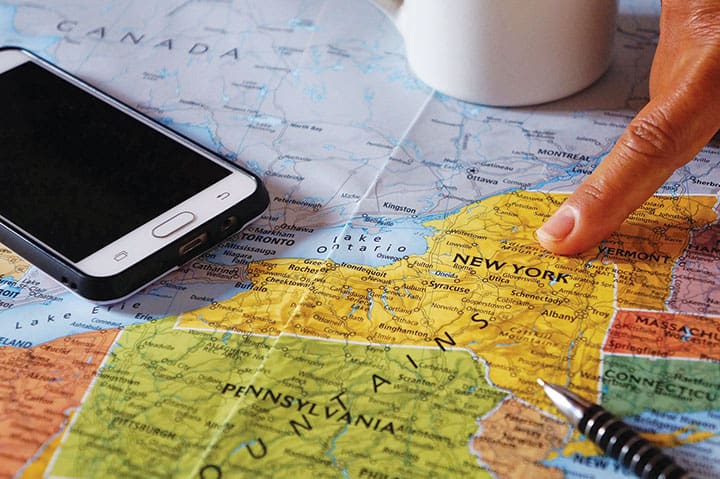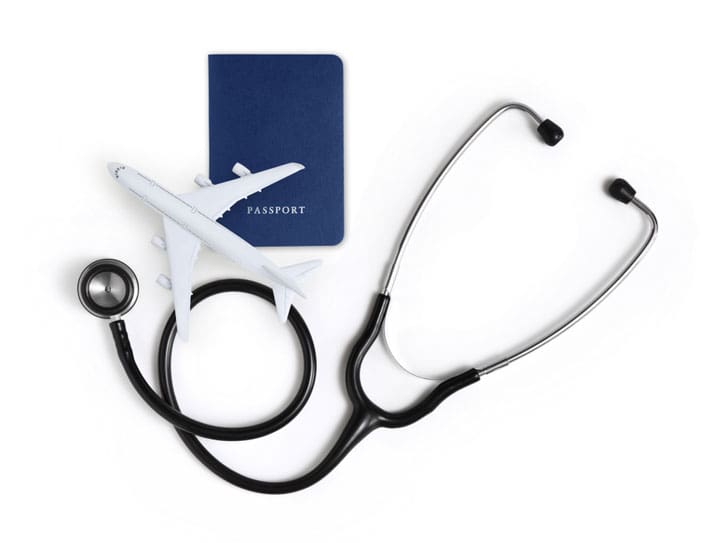Key takeaways
|
Nurses pop up in all sorts of contexts within media. From television, radio, and film to websites and newspaper articles, the way nurses are presented can make a difference in how the public perceives them. Reaching out to the media when you see a misrepresentation of our profession is critical, but why stop there? No one knows nursing better than nurses, so why not create your own content? There are countless ways to do that, and you don’t need to be a media professional. (See Put on your thinking cap.)
In addition to educating the public about all we do, the ideas you develop can benefit your career by demonstrating your creativity and commitment.
The World Wide Web
From websites to blogging and social media, the Internet offers several avenues for communicating with the public, especially since it’s rare to find information about nurses on hospital or other healthcare provider websites. A 2012 analysis by The Truth About Nursing found few leading U.S. hospital websites that described nursing in detail. Sites that do include sections about nurses seem to be aimed at nurses rather than the public.
There are, however, some nurse-created websites that offer basic information about nursing, including those for Johnson & Johnson’s Campaign for Nursing’s Future and The Truth About Nursing, which includes the Become a Nurse section. You’ll also find many nursing school websites with faculty profiles that highlight credentials, interests, and achievements.
Does your organization’s website show the public the key role nurses play in patient care? If it doesn’t, consider creating profiles of nursing services and individual nurses, as well as providing contact information. Work with your organization’s communications team to make sure the page is easy to get to from the homepage. And if the site has a Find a Physician link, suggest adding a Find a Nurse link right next to it.
Blogs and social media are other great ways to connect with the public online. Blog about your personal experiences as a nurse (avoid identifying specific patients as that would violate privacy rules) or about health promotion, which would highlight the fact that we are educated professionals, a fact many people don’t know. The Children’s Hospital of Los Angeles features the RN Remedies blog (www.chla.org/blog/rnremedies), which offers information and advice for patients and other members of the community. Each blog is written by a nurse and includes a photo, professional credentials, and a short description of the nurse’s specialty and areas of interest.
To help spread the word about the work you and other nurses are doing, take advantage of social media tools like Twitter and Facebook. These tools help drive online traffic to content that promotes the profession. But keep in mind that social media’s informality carries the risk of posting something regrettable. Use common sense and follow social media guidelines from professional associations such as ANA and the National Council of State Boards of Nursing.
Put it in writing
The written word can be powerful, and the possibilities are practically endless, including op-eds, feature articles, and books. The Ebola crisis, for example, offered opportunities for more than one nurse to write. Karin Huster, MPH, BSN, RN, wrote an op-ed for the New York Times highlighting the role poor roads played in the crisis in Liberia, illustrating the power of public health advocacy and demonstrating that nurses are articulate health professionals with a well-supported vision for improving care.
Kaci Hickox, MSN, MPH, RN, the veteran public health nurse who resisted the quarantines three state governors tried to impose after she returned from caring for patients in Sierra Leone, wrote a forceful account of her experience for the Dallas Morning News, including advocacy that likely prompted government officials to treat Ebola healthcare workers with more respect.
Many nurses have written books to improve health or to describe their nursing experiences. Theresa Brown, PhD, BSN, RN, in addition to writing articulate columns for major news sources, published two books, Critical Care (2011) and The Shift (2016), which describe her work in oncology care.
Few children’s books give a good account of nursing. A compelling series about modern nursing could be highly effective, especially because many children’s books suggest that becoming a physician is the only desirable healthcare career.
On air
Television, radio, film, and video can be difficult for newcomers, but with the explosion of information technology, nurses can create and post video and audio on the Internet with little effort. At The Truth About Nursing, we created and posted a short You –
Tube video called “Nursing: Isn’t That Sweet?!” that explores nursing stereotypes through a fictional exchange between a nurse and an old high-school classmate who has little understanding of the profession.
TED and TEDx Talks, which are recorded live at locations around the world, allow experts in a field to share ideas and expertise online. Kathleen Bartholo mew, MN, RN, delivered a TEDx Talk called “Lessons from Nursing to the World,” urging listeners to remove the hierarchies in health care to allow nurses and others to save more lives. Her talk and accompanying video amply demonstrate the value of nursing.
Online streaming has broadened the potential reach of radio, making it possible to speak to a much larger audience. An especially good nurse-run radio show is HealthCetera, hosted by Diana Mason, PhD, RN, FAAN, and Barbara Glickstein, MPH, MS, RN. Aired on WBAI in New York, the show often features nurse experts. When physicians appear as guests, the hosts treat them as colleagues, not superiors. Maureen McGrath, RN, hosts the popular Sunday Night Sex Talk show on Vancouver’s CKNW.
Film and television can be more of a challenge. With the exception of Nurse Jackie and Call the Midwife, most television shows have focused on physicians while minimizing nurses’ healthcare skills. Even children’s shows can be troubling. Take Doc McStuffins, for example, which features a young girl (Doc) who prepares for a career as a physician by fixing her ailing toys and dolls. The nurse, though, is one of Doc’s dolls, the dim Hallie the Hippo, who reflects stereotypes like the low-skilled handmaiden and the motherly angel.
But RNs have created effective documentaries, such as nurse David Burton’s 2009 InGREEDients, which reveals the perils of trans fats. And media-savvy nurse experts like Donna Cardillo, MA, RN, CSP, have made effective use of talkshow appearances.
Express yourself
While all of the above options are great ways to talk about nursing, don’t limit yourself to the most obvious types of media. There are lots of paths to communicating the vital role of nurses, including poetry, plays, sculpture, and even games. (See Get out of the box.)
When the public doesn’t understand what nurses do, nursing can’t get the respect and resources it needs. Inadequate funding leads to understaffing, which research indicates can lead to people suffering and dying. But we can change that by expressing ourselves. Together, we can create a world that allocates the resources nursing needs to save the lives of millions.
Sandy Summers is the executive director and Harry Summers is the senior advisor of The Truth About Nursing, a 501(c)(3) nonprofit organization. They also are the authors of Saving Lives: Why the Media’s Portrayal of Nursing Puts Us All at Risk. You can contact them at www.truthaboutnursing.org.
Selected references
Brodie M, Foehr U, Rideout V, et al. Communicating health information through the entertainment media. Health Aff. 2001;20(1):192-9.
Brown T. Critical Care: A New Nurse Faces Death, Life, and Everything in Between. New York, NY: HarperOne; 2011.
Brown T. The Shift: One Nurse, Twelve Hours, Four Patients’ Lives. Chapel Hill, NC: Algonquin Books; 2016.
Centers for Disease Control and Prevention. 2000 Porter Novelli Healthstyles Survey: Prime time viewers and health information. October 24, 2001.
Henry J. Kaiser Family Foundation. Survey snapshot: The impact of TV’s health content: A case study of ER viewers. June 30, 2002.
Hickox K. Her story: UTA grad isolated at New Jersey hospital in Ebola quarantine. Dallas Morning News. October 2014.
Huster K. Fighting Ebola, and the mud. The New York Times. October 20, 2014.
Nursing: The best career on earth. How you can become a nurse. October 2014.
Nursing representation on the websites and boards of directors at the top 17 hospitals ranked by U.S. News and World Report in 2012. Data collected March 2012 and June 2015.
RN remedies. Children’s Hospital Los Angeles. www.chla.org/blog/rn-remedies
Summers S, Summers H. Let’s take the lead in educating the public about nursing. Am Nurs Today. 2016;11(3):36-9.


















